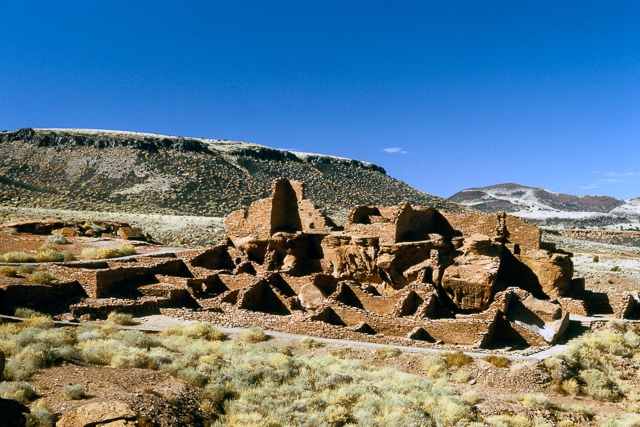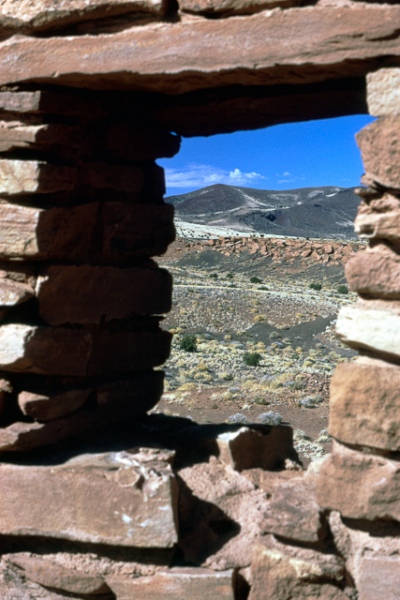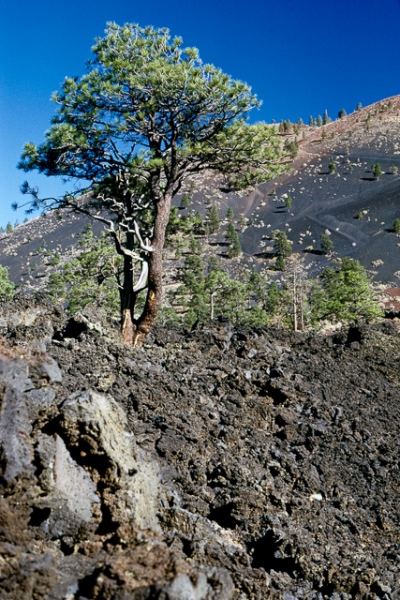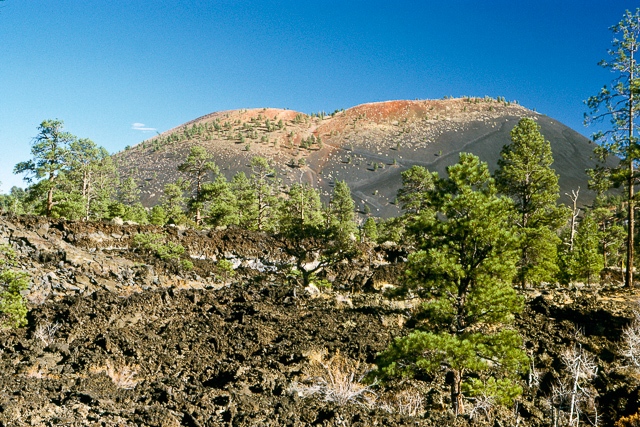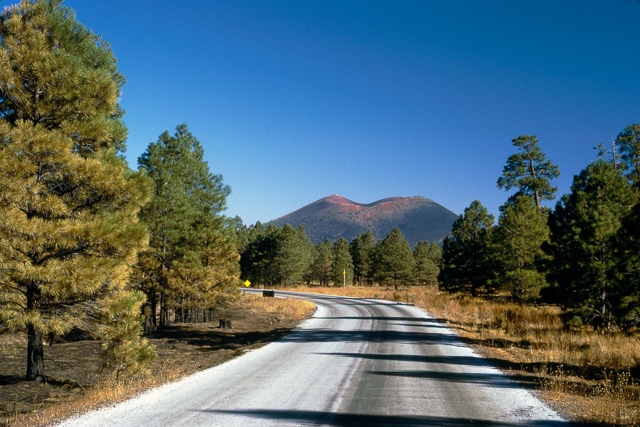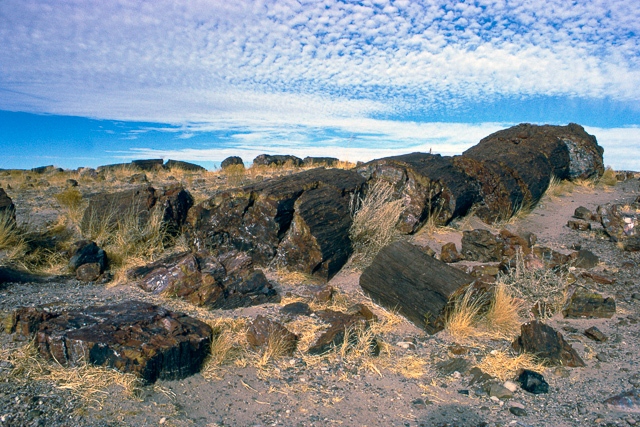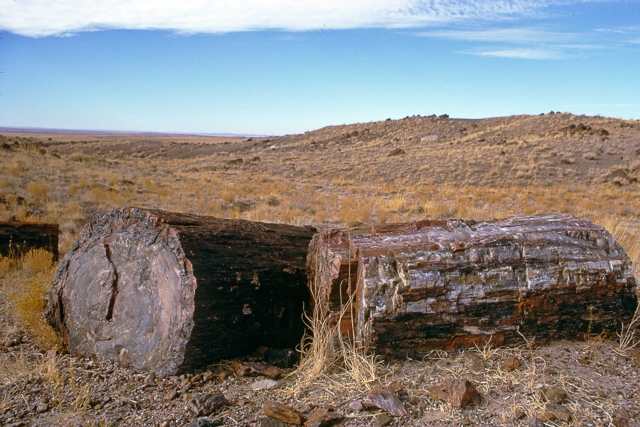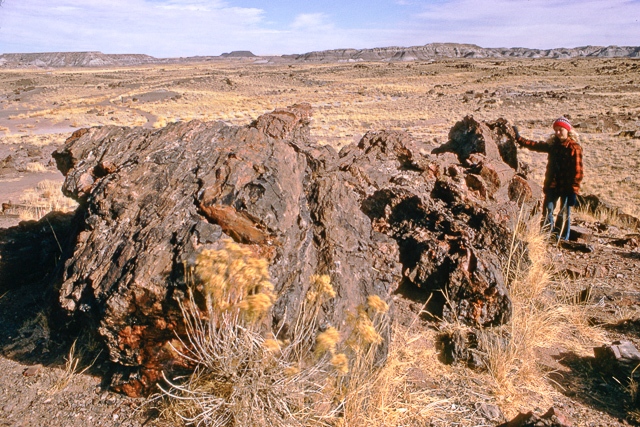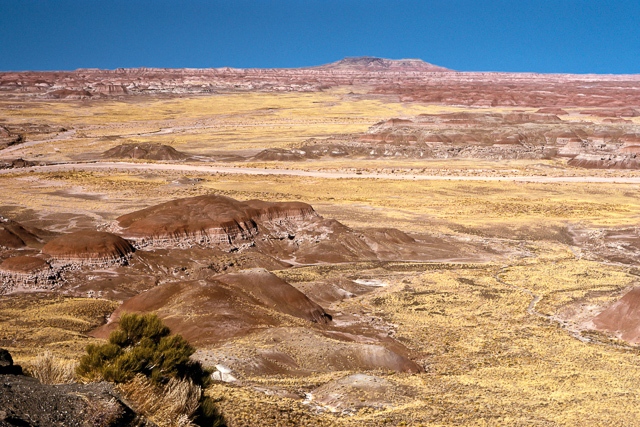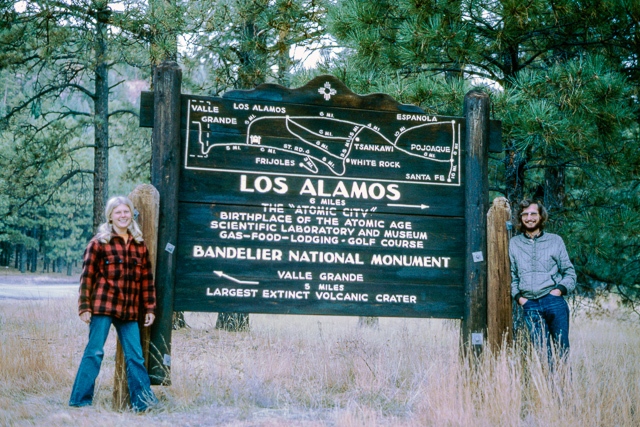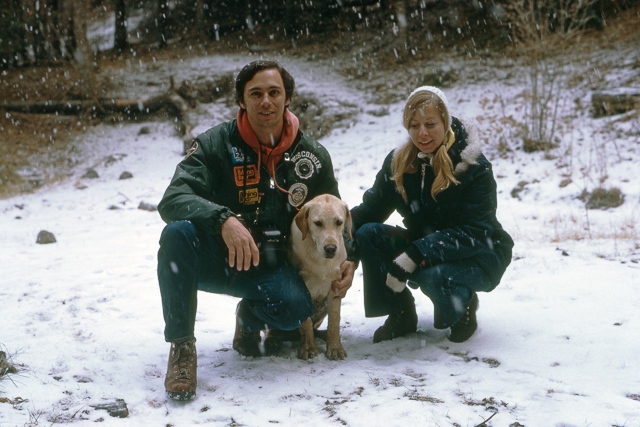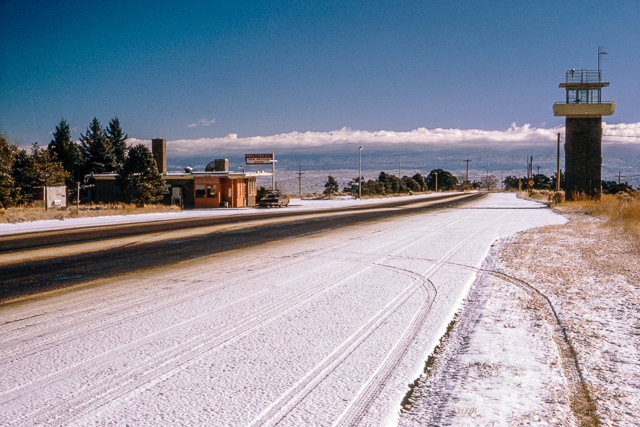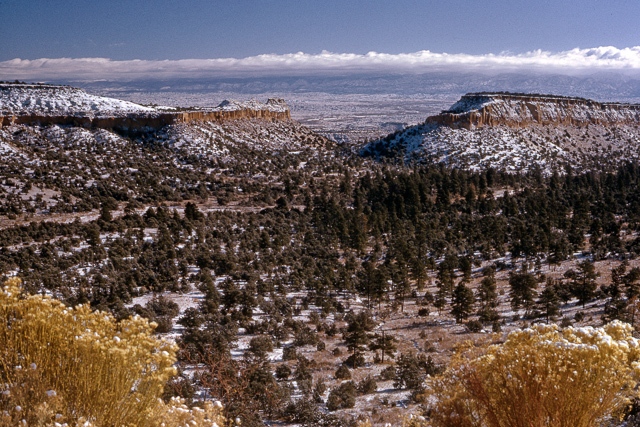The Trip – Part 8: On the road to Thanksgiving
When we left the Grand Canyon we said farewell to our friends. We had a wonderful time camping and hiking with them in Zion and the Grand Canyon. They were headed back to Wisconsin and we were on our way to New Mexico. It was only about a week until Thanksgiving and we had arranged to visit friends in New Mexico for the holiday. I had attended grad school in the Chemistry Department at the University of Wisconsin with Stan Kosiewicz. He and his wife were living in Los Alamos where Stan worked at the Los Alamos National Laboratory. We’d been on the road since August 29 and, except for one night in a motel due to a winter snow storm, we’d camped the entire time. After almost 3 solid months of living in our tent, we looked forward to eating and sleeping indoors for a change.
We left the Grand Canyon via the east entrance and took US 89 south towards Flagstaff. Along the way we stopped at Wupatki National Monument and Sunset Crater Volcano National Monument. The two monuments are next to each other geographically and historically. The native American pueblos preserved at Wupatki National Monument were constructed in the years following the eruption of the Sunset Crater Volcano and the ash, deposited in thin layers in that location, is thought to have retained moisture and improved the farming for the residents at Wupatki. Sunset Crater was supposedly given that name by John Wesley Powell because of the reddish color of the top of the cinder cone.
Leaving Sunset Carter we caught I-40 and headed east towards New Mexico. Our last stop in Arizona was at Petrified Forest National Park where you find not only the 200 million year-old fossilized trees that give the park it’s name but also archeological sites that explore 13,000 year-old native American sites. After an exhausting day of exploring we ended up in a National Forest campground for the night.
We headed east into New Mexico where the license plates read “New Mexico USA.” It made me wonder how many people think that New Mexico is part of “old” Mexico. Since we were getting near Los Alamos sooner than we had anticipated we needed to find a place to stay for another night. We chose Bandelier National Monument, which is only about 15 miles from our ultimate destination. This is another interesting archeological site where native Americans lived for thousands of years. By the way, the name of this place has nothing to do with those belts that are made to hold a bunch of bullets. Those are bandoliers. This place was named after Adolph F. A. Bandelier, who you can read about on the Monument website.
After setting up camp we explored the ruins where some of the dwellings were dug into the volcanic tuff that makes up the sides of cliffs. As the sun began to set the temperature really began to drop. How could it be so cold? We were way down south in New Mexico! Having grown up in Wisconsin I never paid much attention to elevation. It turns out that Bandelier has an elevation ranging from 5,000 – 10,000 feet above sea level and Los Alamos sits at 7320 feet above sea level. In late November it can get quite cold at those elevations even in New Mexico. When I went to the restroom to brush my teeth before turning in there were two couples in there with their sleeping bags and packs. They were hoping that they’d be warmer if they spent the night on the floor of the bathroom instead of outside. So, the men’s room became coed for that night.
We packed up the next morning and made our way to Los Alamos. The mesas near the city were covered with a light dusting of snow. We drove past the old guard tower that stood by the gate to the city when security was tight and few people knew that physicists were working on the atomic bomb. Our friends Stan and Claudia and their faithful dog Spike welcomed us warmly and we had an opportunity to relax and socialize and enjoy a wonderful Thanksgiving weekend.
